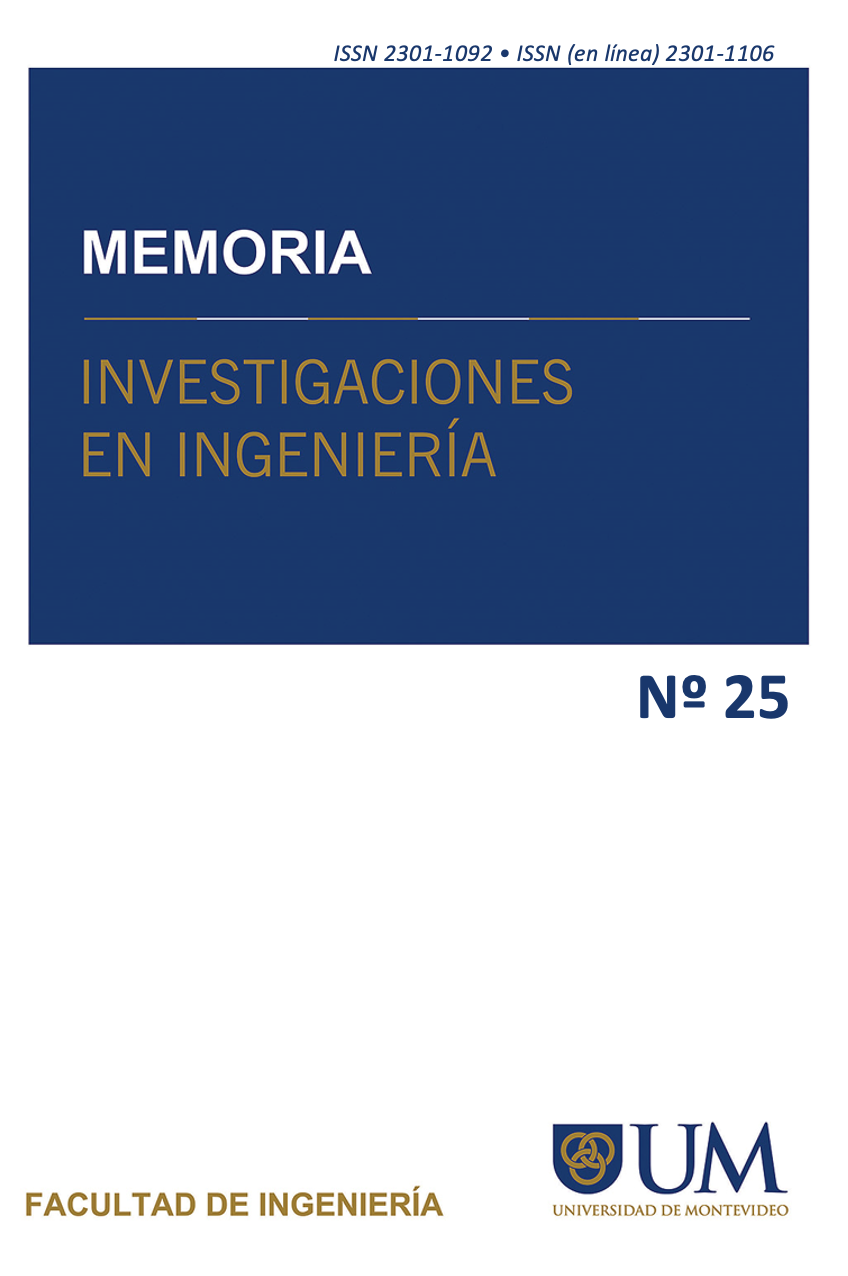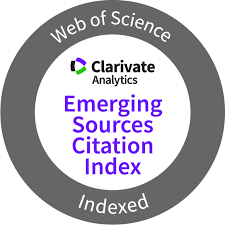A Simulation Based Study on the Effect of Metallic and Non-metallic Nano-particles on the Performance of Parabolic Trough Concentrator
DOI:
https://doi.org/10.36561/ING.25.10Keywords:
Parabolic trough concentrator, Metallic nanoparticles, Non-metallic nanoparticles, Water-based nanofluids, Heat transfer enhancementAbstract
This research investigates the simulation-based performance of metallic and non-metallic nanoparticles, along with water-based heat transfer fluids, used in parabolic trough concentrator. Its main goal is to analyze the performance enhancement of the concentrator, divided into two phases. The first phase focuses on validating the experimental setup using computational fluid dynamics through ANSYS software. The same validated simulation model is then utilized to assess the performance of solar parabolic trough concentrator with different metallic and non-metallic, plus water-based nanofluids. The study utilizes water alone, along with copper, gold, and silver, and two non-metallic nanoparticles, alumina oxide, and copper oxide, in varying volumetric concentrations from 1% to 3%. The simulation analysis, conducted at a speed of 0.12 m/s, reveals that the highest average temperature increase is observed in the case of alumina + water-based nanofluid at 3% volumetric concentration, with a maximum average heat transfer of 351.89 watts. Additionally, the silver + water-based nanofluid demonstrates the highest average value of the coefficient of convective heat transfer at 88055.5 W/(m2 K). The gold + water-based nanofluid shows a higher average value of the Reynolds Number at 4352.268, while the maximum Nusselt number is observed with alumina oxide + water-based nanofluid, measuring 1.7698.
Downloads
References
Al-Oran, Otabeh & A'saf, Ahmad & Lezsovits, Ferenc. (2022). Experimental and modelling investigation on the effect of inserting ceria-based distilled water nanofluid on the thermal performance of parabolic trough collectors at the weather conditions of Amman: A case study. Energy Reports. 8. 4155-4169. https://10.1016/j.egyr.2022.03.030.
Al-Oran, Otabeh & Lezsovits, Ferenc & Aljawabrh, Ayham. (2020). Exergy and energy amelioration for parabolic trough collector using mono and hybrid nanofluids. Journal of Thermal Analysis and Calorimetry. 140. https://10.1007/s10973-020-09371-x.
Abed, Nabeel & Afgan, Imran & Iacovides, H. & Cioncolini, Andrea & Khurshid, Ilyas & Nasser, Adel. (2021). Thermal-Hydraulic Analysis of Parabolic Trough Collectors Using Straight Conical Strip Inserts with Nanofluids. Nanomaterials. 11. https://10.3390/nano11040853.
Ajbar, Wassila & Perez, J A & Parrales, Arianna & Torres, Lizeth. (2023). Thermal efficiency improvement of parabolic trough solar collector using different kinds of hybrid nanofluids. Case Studies in Thermal Engineering. 42. 102759. https://10.1016/j.csite.2023.102759.
Benabderrahmane, Amina & Miloud, Aminallah & Samir, Laouedj & Benazza, Abdelilah & Solano, Juan. (2016). Heat Transfer Enhancement in a Parabolic Trough Solar Receiver using Longitudinal Fins and Nanofluids. Journal of Thermal Science. 25. 410-417. https://10.1007/s11630-016-0878-3.
Bellos, Evangelos & Tzivanidis, Christos. (2018). Thermal efficiency enhancement of nanofluid-based parabolic trough collectors. Journal of Thermal Analysis and Calorimetry. 135. https://10.1007/s10973-018-7056-7.
Bharti, Alka & Mishra, Abhishek & Paul, Bireswar. (2019). Thermal performance analysis of small-sized solar parabolic trough collector using secondary reflectors. International Journal of Sustainable Energy. 38. 1-21. https://10.1080/14786451.2019.1613991.
Dupeyrat, Patrick & Ménézo, Christophe & Fortuin, Stefan. (2014). Study of the thermal and electrical performances of PVT solar hot water system. Energy and Buildings. 68. 751-755. https://10.1016/j.enbuild.2012.09.032.
Ekiciler, Recep, et al., Effect of hybrid nanofluid on heat transfer performance of parabolic trough solar collector receiver. Term. Anal. Calorim. 2021; 143 (2), 1637-1654
https://doi.org/10.1007/s10973-020-09717-5.
Ghasemi, Seyed Ebrahim and A. A. Ranjbar. “Thermal performance analysis of solar parabolic trough collector using nanofluid as working fluid: A CFD modelling study.” Journal of Molecular Liquids 222 (2016): 159-166.
Govindaraj, Kumaresan & Sudhakar, Padmanabhan & Ravichandran, Santosh & Velraj, R. (2017). Experimental and numerical studies of thermal performance enhancement in the receiver part of solar parabolic trough collectors. Renewable and Sustainable Energy Reviews. 77. https://10.1016/j.rser.2017.01.171.
Gupta, Munish & Ahlawat, Vinay & Kumar, Rajesh & Said, Zafar. (2017). A review on thermophysical properties of nanofluids and heat transfer applications. Renewable and Sustainable Energy Reviews. 74. 638-670. https://10.1016/j.rser.2017.02.073.
H.M. Sandeep, U.C. Arunachala, Solar parabolic trough collectors: A review on heat transfer augmentation techniques, Renewable and Sustainable Energy Reviews, Volume 69, 2017, Pages 1218-1231, ISSN 1364-0321,https://doi.org/10.1016/j.rser.2016.11.242.
Kaloudis, Efstathios & Papanicolaou, E. & Belessiotis, V.. (2016). Numerical simulations of a parabolic trough solar collector with nanofluid using a two-phase model. Renewable Energy. 97. 218-229. https://10.1016/j.renene.2016.05.046.
Khanafer, Khalil & Vafai, Kambiz. (2011). A critical synthesis of thermophysical characteristics of nanofluids. International Journal of Heat and Mass Transfer - INT J HEAT MASS TRANSFER. 54. https://10.1016/j.ijheatmasstransfer.2011.04.048.
Lewis, Nathan & Nocera, Daniel. (2006). Powering the Planet: Chemical Challenges in Solar Energy Utilization. Proceedings of the National Academy of Sciences of the United States of America. 103. 15729-35. https://10.1073/pnas.0603395103.
Owusu, Phebe Asantewaa & Asumadu Sarkodie, Samuel. (2016). A Review of Renewable Energy Sources, Sustainability Issues and Climate Change Mitigation. Cogent Engineering. 3. 1167990. https://10.1080/23311916.2016.1167990.
Patil M.S., hekhawat S.P. Performance Assessment of Parabolic Trough Collector Receiver with Al2O3 Nanofluid. J. Water Environ. Nanotechnol., 2022; 7(3): 332-343.
DOI: https://10.22090/jwent.2022.03.008.
Shyam, A., Ahmed, K.R.A., Christopher, S.S. et al. Thermal performance enhancement in a solar parabolic trough collector with optimized secondary optics. Clean Techn Environ Policy (2023). https://doi.org/10.1007/s10098-023-02649-2
Tagle, Pablo & Nigam, K.D.P. & Rivera-Solorio, Carlos. (2018). Heat transfer model for thermal performance analysis of parabolic trough solar collectors using nanofluids. Renewable Energy. https://125. 10.1016/j.renene.2018.02.069.
Uzair, M., & Rehman, N. U. (2021). Intercept factor for a beam-down parabolic trough collector. Journal of Solar Energy Engineering, 143(6), 061002.
Uzair, M., ur Rehman, N., & Raza, S. A. (2018). Probabilistic approach for estimating heat fluid exit temperature correlation in a linear parabolic trough solar collector. Journal of Mechanical Science and Technology, 32, 447-453.
Published
How to Cite
Issue
Section
License
Copyright (c) 2023 Muhammad Asif Ali, Muhammad Uzair

This work is licensed under a Creative Commons Attribution 4.0 International License.






















